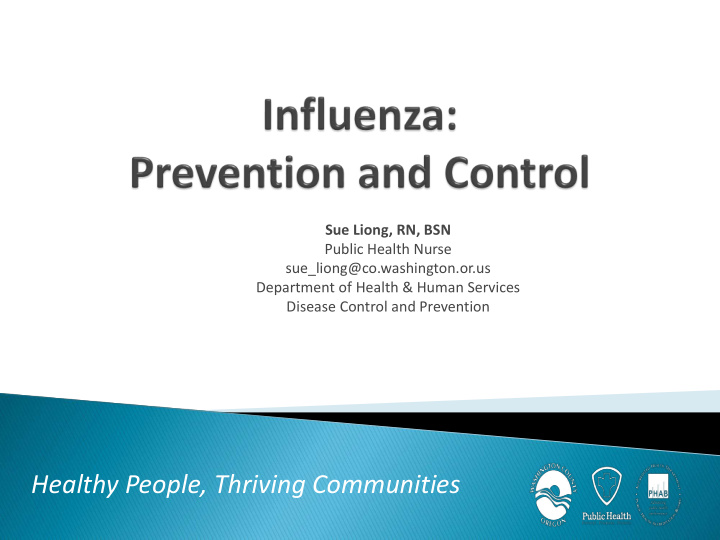



Sue Liong, RN, BSN Public Health Nurse sue_liong@co.washington.or.us Department of Health & Human Services Disease Control and Prevention Healthy People, Thriving Communities
Envi vironm ronment nt Germs rms: Peop ople le/A /Ani nima mals ls: Infecti ctious ous Agent nt Host Transmission Where ere they ey normall ormally y live: ve: Reservo voir
Environmental factors: Enviro ronmen nment crowding, sanitation, etc Host Characteristics: age, immunity status, etc. Infecti ctious ous Agent nt Host Trans nsmission on Reserv ervoir Types of Transmission: Direct and Indirect These are areas for us to a action on to st stop spread ad
Direct Indirect ◦ Person to person ◦ Airborne ◦ Droplet ◦ Vector-borne ◦ Vertical ◦ Vehicle-borne ◦ Fomites
Droplet Airborne Water heavy particles from nose or Particles <5nanometer in size throat Remains suspended for long Fall to ground within ~6 feet periods. Can act as gas. Mostly respiratory infection Evaporate by leaving droplet nuclei i.e. Influenza, Pertussis, Mumps i.e. Tuberculosis(TB), measles, chickenpox
Incubation Period Minutes…Days…Months...Years Symptoms Exposure onset Time: Incubation Period (No Symptoms) Communicable Period
Day -14: exposure Day 0: rash onset Day -4 Day +4 Communicable Period: 8 Days Incubation Period: 14Days
Influenza (Flu) ◦ Pathogen: Virus ◦ Type of transmission: Droplet, person to person ◦ Communicable period: 1 day before and up to 5-7 days after symptoms onset ◦ Incubation period: 1-4 days
Signs & Symptoms
What can I do to stop the flu? Get Vaccinated, Stop the Spread How can I stop the flu in the facility? Participate in Flu Campaign Encourage Vaccination Stop the Spread
Recommend
More recommend